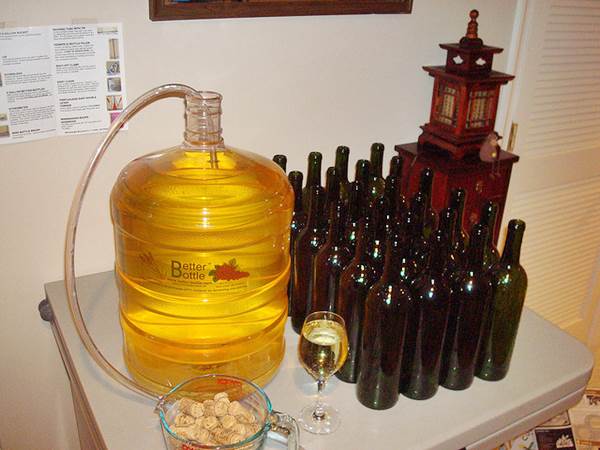 Home Wine Making – Image Courtesy: Jay Crossler
Home Wine Making – Image Courtesy: Jay Crossler
There is a growing and popular trend of making wine at home that can be observed around the world. It’s surely a fun way for wine lovers to brew their own particular kind of fruit wine that they may not normally find on the wine shops’ shelves.
For those who decide to dabble in winemaking, it’s a feeling of great pride when they are able to serve their own concoction of wine to friends and family.
Advantages of Making Wine at Home
One of the greatest advantages of making wine at home is that you are fully assured of the wine’s ingredients being of good quality as you have complete control over the whole process. It is better than getting confused by all the jargon in the wine world, of biodynamic, organic and semi-organic wines, floating out there and not being sure of what to get from outside. If you decide to make wine at home, you can be sure that it is completely organic as you know exactly how and where your grapes were grown and what kinds of preservatives are going into the winemaking process.
Choice of Ingredients
If you are making your own wine from scratch, there are several choices available to you to choose your grapes:
- You can grow your own grapes; however, that may take years and require a lot of hard work
- You can find a vineyard that sells organic grapes, which is less effort but this may take away some of your satisfaction about your winemaking being ‘complete’
- Finally, you have the option of buying grape concentrates, but then they might not yield your intended flavor
To enhance the flavor of the grapes, as well as to create a higher alcohol content, home wine makers have the choice of adding various ingredients. Also, they can decide how to preserve the freshness of the wine by preventing oxidation. Fermenting grape juice in its own yeast is also an option, but most winemakers avoid going this way.
If your grapes have lower sugar content, you may consider adding sugar or honey to them. Some home winemakers manage to get a woody flavor out of their wines by adding wood chips to the process. This way, they don’t have to store the wine in wood barrels for long periods of time.
Adding Sulfites for Preservation
Since you are now an organic wine maker, you’ll have to decide whether to add sulfites to your wine and in what quantity. Sulfites, as we know, are added to prevent oxidation and spoiling of wine. However, to be a true certified level organic wine, the amount of sulfites has to be kept to a minimum during the winemaking process. Actually, the fermentation process itself creates sulfites naturally, so be careful while assessing your additional needs.
Wine Making Kits
There is, of course, a convenient way for you to make your own wine without all the hassle – by buying a wine making kit. These kits include everything that you’ll need like grape concentrate, nutrients, preservatives and yeast. You’ll also get all the required basic equipment like a bucket, carboy, corks, hydrometer and a siphon. Try to look for a kit that comes with organic ingredients and limited additives.
Wine making kits are quite handy and you are usually only required to add water and sugar to such kits. Also, you have a varied choice of wine types available among the kits like Cabernet Sauvignon, Chardonnay, Chianti, Merlot, Port, Riesling, Sherry, Shiraz and White Zinfandel. The wine making instructions are provided with all the kits and they generally yield a good bottle of wine in about three weeks.
With the growing popularity of, and the trend towards, organic wines, more and more regular people are challenging themselves to indulge in winemaking. They find in this process a way of going back to nature and to create a wine that is rich, flavorful and aromatic without compromising the quality.
Leave a Comment